Armadillos are really strange creatures. They’re also not that common, even though they’re native to the Americas. That leads some people to wonder if they are, in fact, endangered. There are actually many different species of armadillos, and some of them are on some endangered species lists. Other lists, though, do not classify these small vertebrates as endangered at all. Several armadillo species are listed as vulnerable or threatened on the IUCN Red List, and so they are also, unfortunately, at least on their way to endangered status, for a variety of different reasons.
What Exactly Are Armadillos, Anyway?
“Armadillo” means “little armored one,” and that’s an appropriate name because they’re small, weird-looking mammals covered in a leathery armor shell. They look a bit like mammalian turtles. In fact, the Aztec name for the armadillo was “turtle-rabbit.” They’re distantly related to sloths and anteaters.
Armadillos are mostly found in South America, with Paraguay alone being home to 11 different species. Two species have made it as far north as Central America, and only one species includes North America in its home range, mostly in the southern states: dasypus novemcinctus, which is the scientific name for the nine-banded armadillo. Armadillos can be found in many different habitats, from enclosed spaces like forests to deserts and other wide open areas.
They are small animals, ranging from 5 inches long to 5 feet long, with a normal size of between 1 and 2 feet. They usually have powerful claws for digging on both front and hind feet, and bony plates under the surface of their leathery armor shells. Unlike a turtle shell, these shells are segmented into bands of armor plate, allowing some species of armadillo to curl up into a little armored ball when threatened. Separate species have different numbers of bands. Although armadillos have short legs, they can move surprisingly fast. They can even stand up on their hind legs. Most species have a long snout and a long tail.
There are a wide range of different looks among the different armadillo species. The nine-banded armadillo is the one most Americans are familiar with, as it’s the only armadillo species in America. Many armadillo species look a lot like it. Some really don’t look much a like at all. Mariella superina, the pink fairy armadillo, for example, looks more like a Pokemon than a regular armadillo, with its tiny head, snub nose, lack of a long tail, and fuzzy fur poking out from under its armor. The hairy long-nosed armadillo looks like a shrew or some other small rodent, with its hard shell invisible under its long hair.
In fact, armadillos are odd in a lot of ways. Which isn’t surprising, seeing as they’re the only survivors of the entire family dasypodidae. There aren’t really any other creatures like them. The armadillo is the only mammal with a bony shell. Some armadillos always give birth to identical quadruplets. Young armadillos have soft shells. Some have disproportionately large sharp claws. Some of them are surprisingly good swimmers. Others can hold their breath for six minutes at a time, and just walk across the bottom of any streams and rivers they need to cross. Many armadillos sleep for 16 hours a day and are only awake for short periods at a time.
Armadillos have poor eyesight but an excellent sense of smell. They don’t need to use their small eyes anyway, though, because they mostly eat insects, grubs, beetle larvae, and other small invertebrates that are usually found buried in the ground or in rotting wood. Such things are easier to sniff out than to see. The armadillo’s armor allows them to safely squeeze into small spaces with sharp rocks, thorns, and such to get the insects hidden within. Some armadillos feed on dead animals, consuming both carrion and the maggots infesting it.
Armadillos tend to have a short gestation period, ranging from 2 to 5 months for most species. They also tend to reach sexual maturity in just a year, so they can replenish their numbers pretty quickly. However, despite this, many armadillo populations are in trouble.
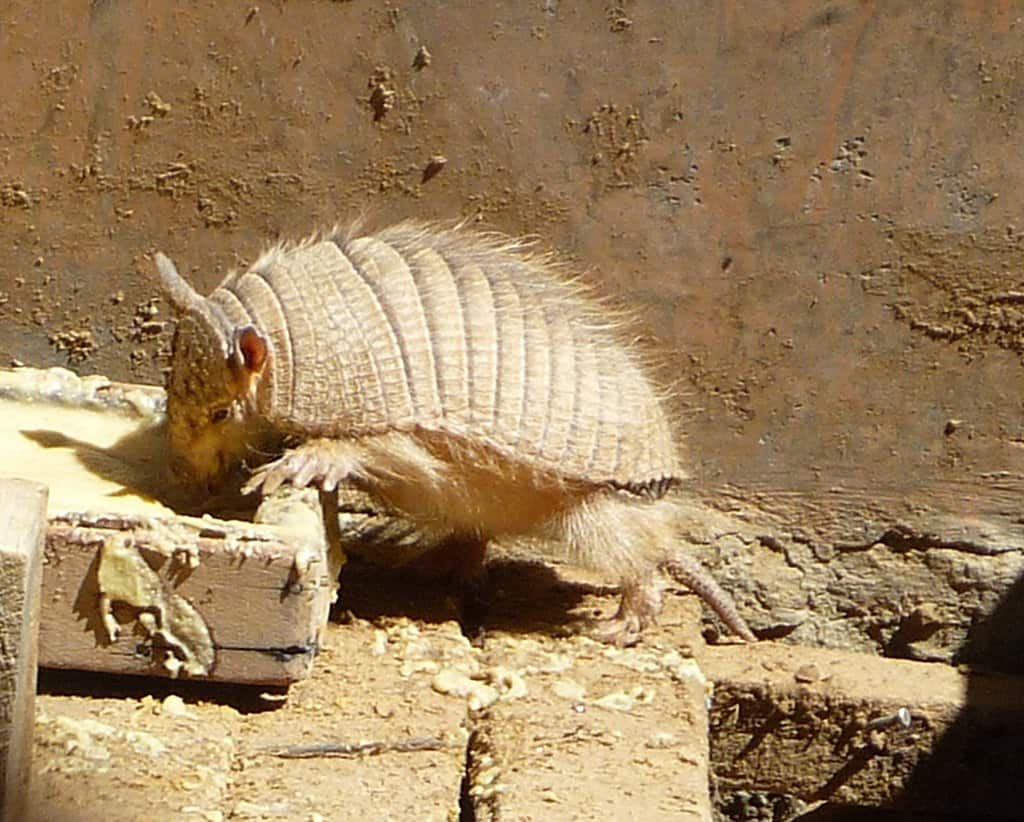
Andean Hairy Armadillos
Andean hairy armadillos are considered endangered by the Bolivian government because their numbers and ranges are so small. Some consider them to just be members of the screaming hairy armadillo species, though, not a separate species, and so not actually endangered.
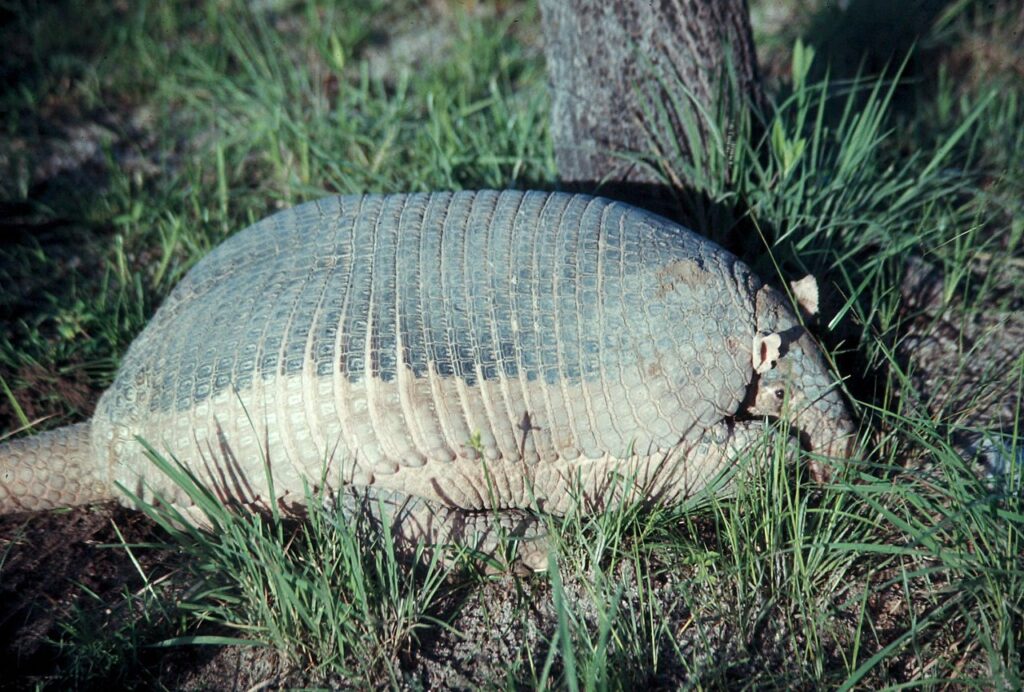
Giant Armadillos
Priodontes maximus, the giant armadillo, is the largest species of armadillo. Both male and female giant armadillos grow up to 5 feet long. Giant armadillos are listed as “vulnerable” on the IUCN Red List. Although they have a giant range covering most of South America, they are oddly rare throughout that range. The numbers of this species have declined by about 30% over the last couple of decades.
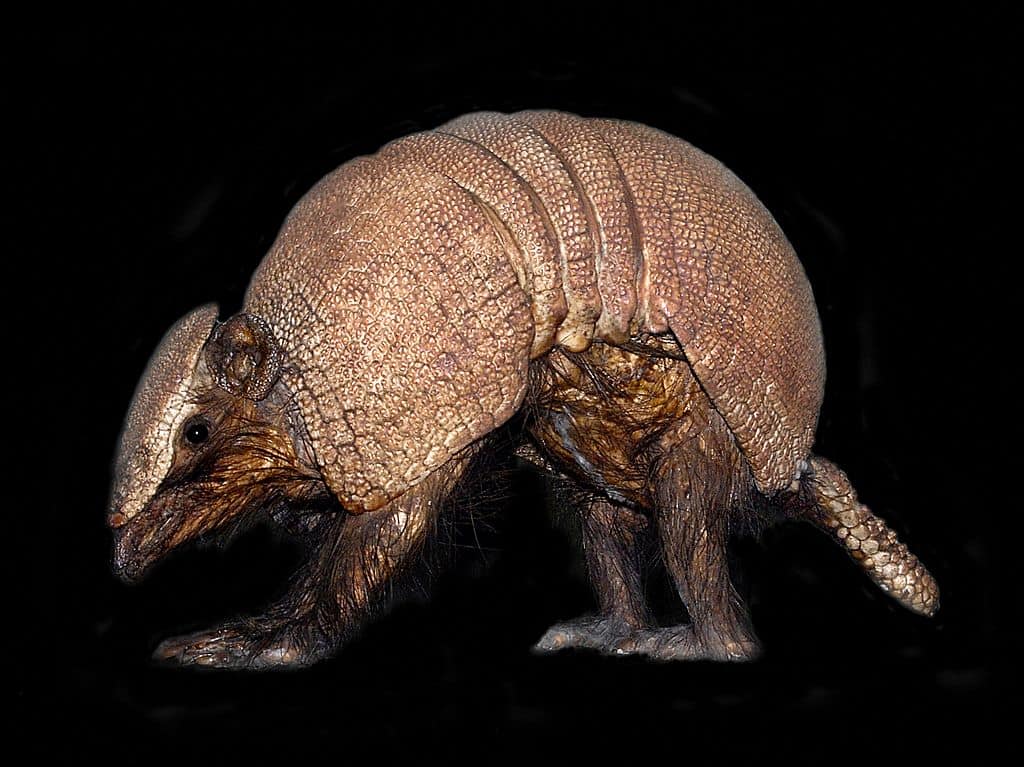
Brazilian Three-Banded Armadillos
The vulnerable Brazilian three-banded armadillo has suffered an even steeper decline, losing 30% of their numbers in just over 10 years.
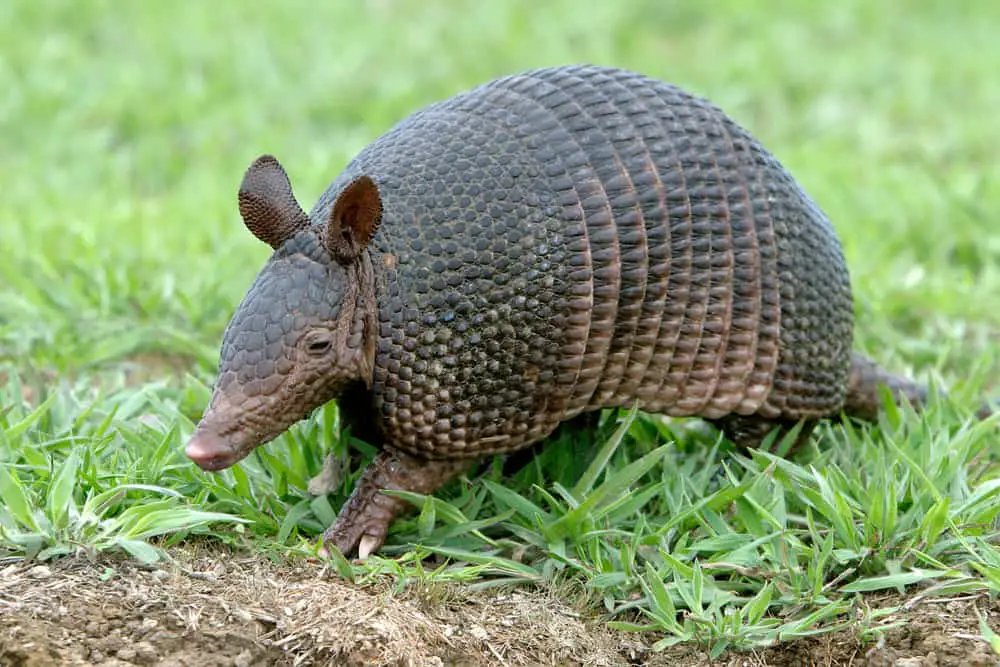
Long-Nosed Armadillos
Both long-nosed species are doing a little better, having “only” lost 20% or so in the last 10 to 15 years. Both northern and southern long-nosed armadillos are considered “near-threatened” by the IUCN
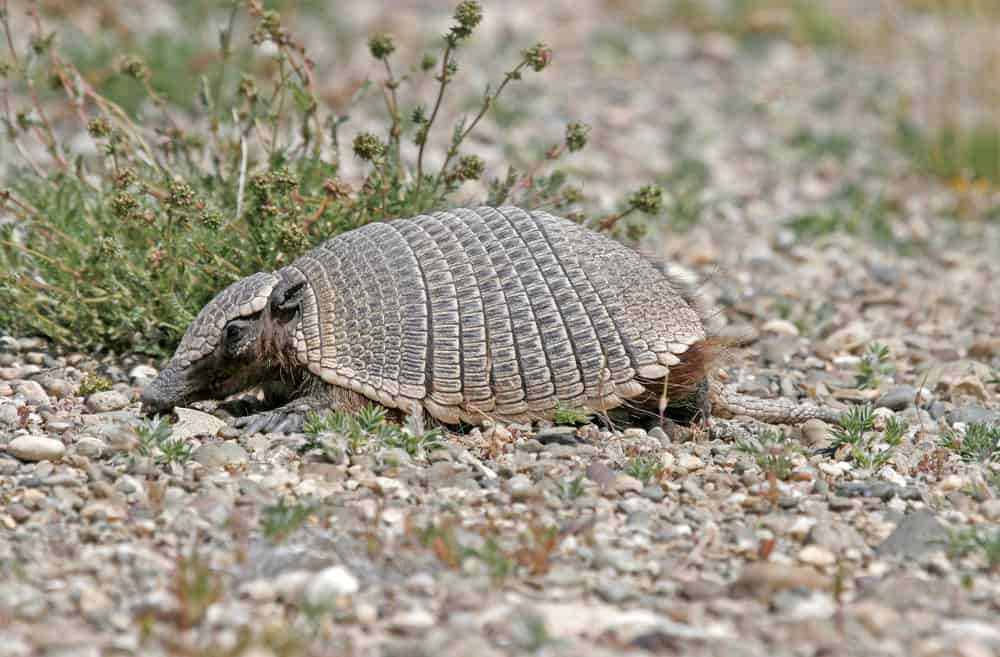
Pichis Armadillos
Pichis, or dwarf armadillos, are native to Southern and Central Argentina, and are the only species to hibernate. It is considered near-threatened because it has lost 20% of its numbers in just over 10 years.
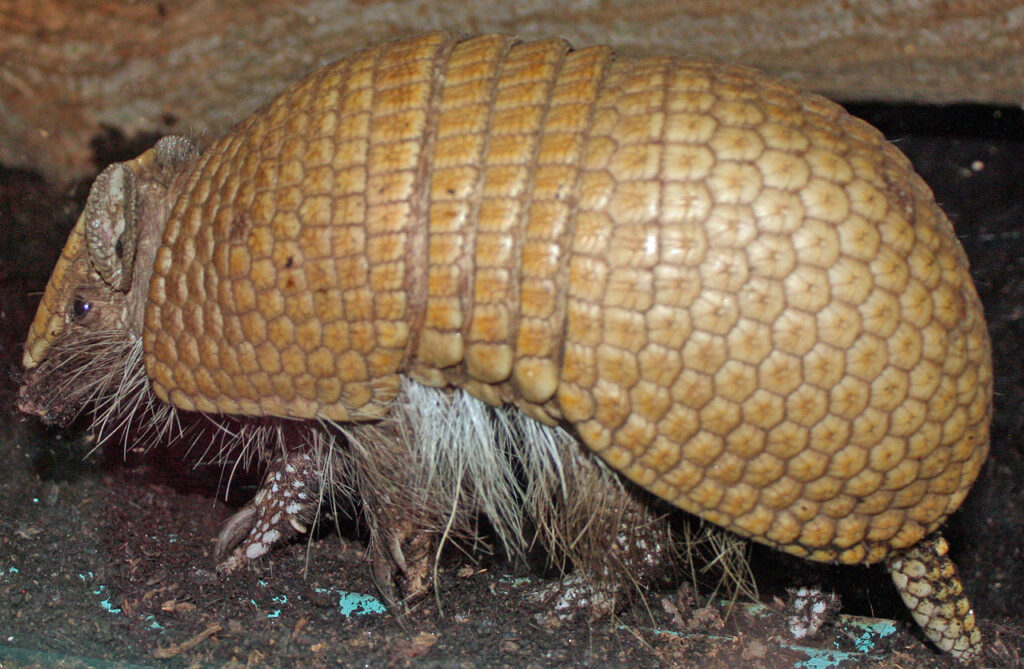
Southern Three-Banded Armadillos
This breed is also considered near-threatened by the IUCN.
Habitat Destruction
One of the reasons why certain species of armadillo are in danger, if not endangered, is because of human encroachment on armadillo habitats. As humans build new towns, cities, mines, and so forth, they often destroy the habitats of these creatures. Cattle ranching is one of the major threats, as it requires so much land.
Roads also pose a particularly grave danger to armadillos. They weren’t evolved to handle them. Although according to popular belief, all armadillos curl up into a ball when confronted by danger, this is really only true of a couple of species. A lot of them actually leap straight up into the air when startled, as much as 3 or 4 feet. This is a particularly deadly reflex when it was a car or truck that caused the startle reflex.
Habitat loss is perhaps the biggest threat to armadillo populations because armadillos are solitary animals. As every single armadillo requires a lot of space, successful breeding populations tend to require large habitats. When the loss of habitat is made too extreme by human encroachment, whole populations can suddenly collapse. This is particularly likely with those species that have a limited breeding season.
Angry Farmers
To farmers, the armadillo is an agricultural pest. Well, certain species are, anyway. Giant armadillos have strong legs with six-inch claws for tearing open termite mounds and sticky tongues for pulling them out. These features also make it easy for them to do a lot of damage to farm property in search of food. This is not the only species to run afoul of farmers, either. The screaming hairy armadillo creates similar problems on farms. To prevent armadillo damage, farmers and agricultural companies will often trap and kill them.
Hunting
Some people see the armadillo as a food source. It’s particularly popular in Brazil, where many people say that it tastes like chicken. This, unfortunately has led to a booming industry supported by hunting, which has greatly depleted the numbers of more than one species, even causing them to go extinct from certain habitats. In some places, hunting is the main threat to local armadillos.
However, armadillo is a risky food source, because armadillo meat frequently carries the bacteria that causes Hansen’s disease, commonly known as leprosy.
Pet Trade
Some species of armadillo, such as the giant armadillo, are further threatened by the black market pet trade.
Predators
Natural predators also account for a significant percentage of armadillo deaths. Mountain lions and other large predators will sometimes feed on them. Domestic dogs will also sometimes try to kill them whenever a human settlement comes too close to armadillo habitats.
Cold Weather
Armadillos often have a low body temperature, which is why they prefer warm to hot climates like those found in the southeastern United States and Brazil, and do best in the summer months. This low body temperature makes cold weather particularly dangerous to them. As climate change makes weather extremes in both hot and cold directions, more frequent, armadillo habitats that are normally warm enough can become suddenly deadly.
Conservation Efforts
Some species of armadillo have populations so small that they are vulnerable to being wiped out. They are still common in the wild throughout South America. Additionally, they can be found in the San Diego Zoo and other places dedicated to the conservation of nature. There are several projects working to help them, too. The Giant Armadillo Conservation Project, for example, is working to preserve the giant armadillos, and scientists such as Arnaud Desbiez and his field team work to preserve them as well.
They’re not in any immediate danger of disappearing. There is still hope.
Recent Posts
The only venomous snakes in Washington State are Northern Pacific Rattlesnakes. The Northern Pacific Rattlesnake (Crotalus oreganus oreganus) is a sub-species of the Western Rattlesnake. Anyone...
Skunks are not classified as true hibernators. But they go into a state of torpor when the weather gets cold. Skunks are light sleep hibernators, along with opossums, bears, and raccoons. ...
